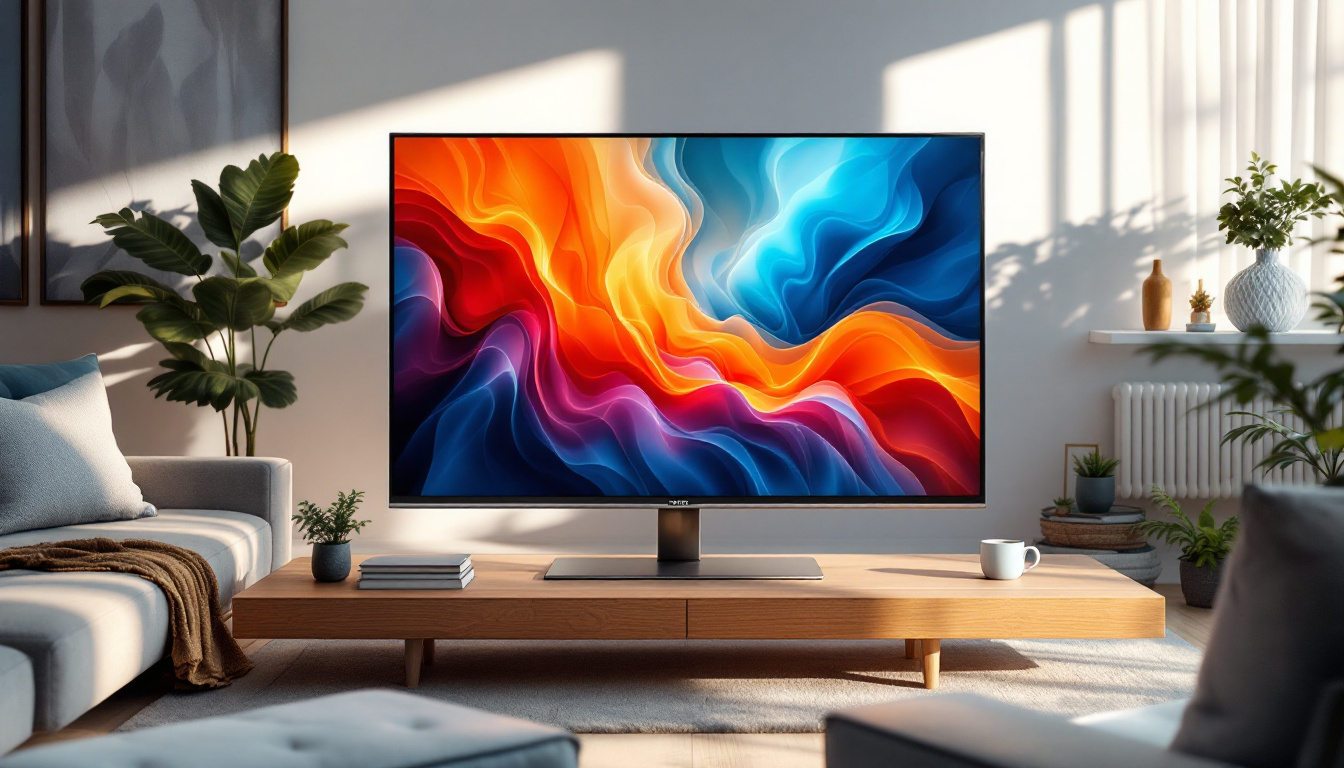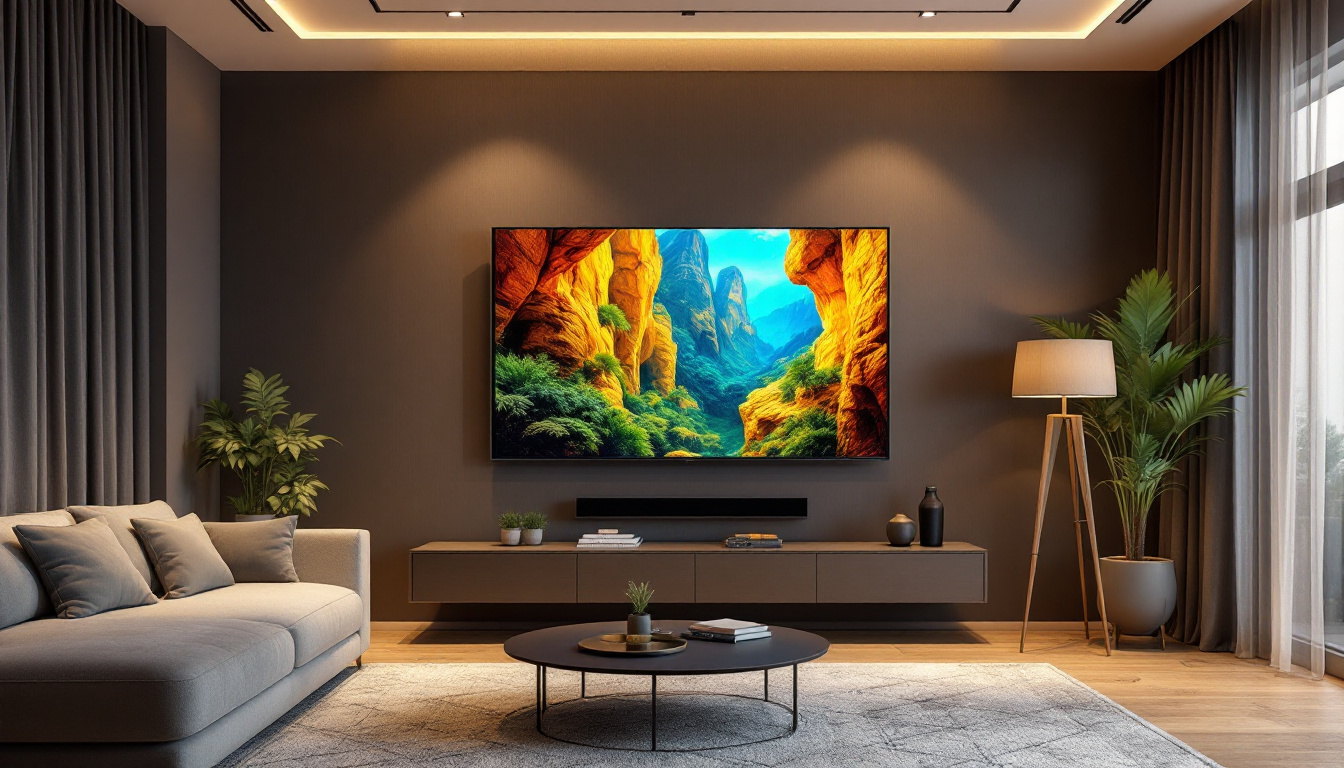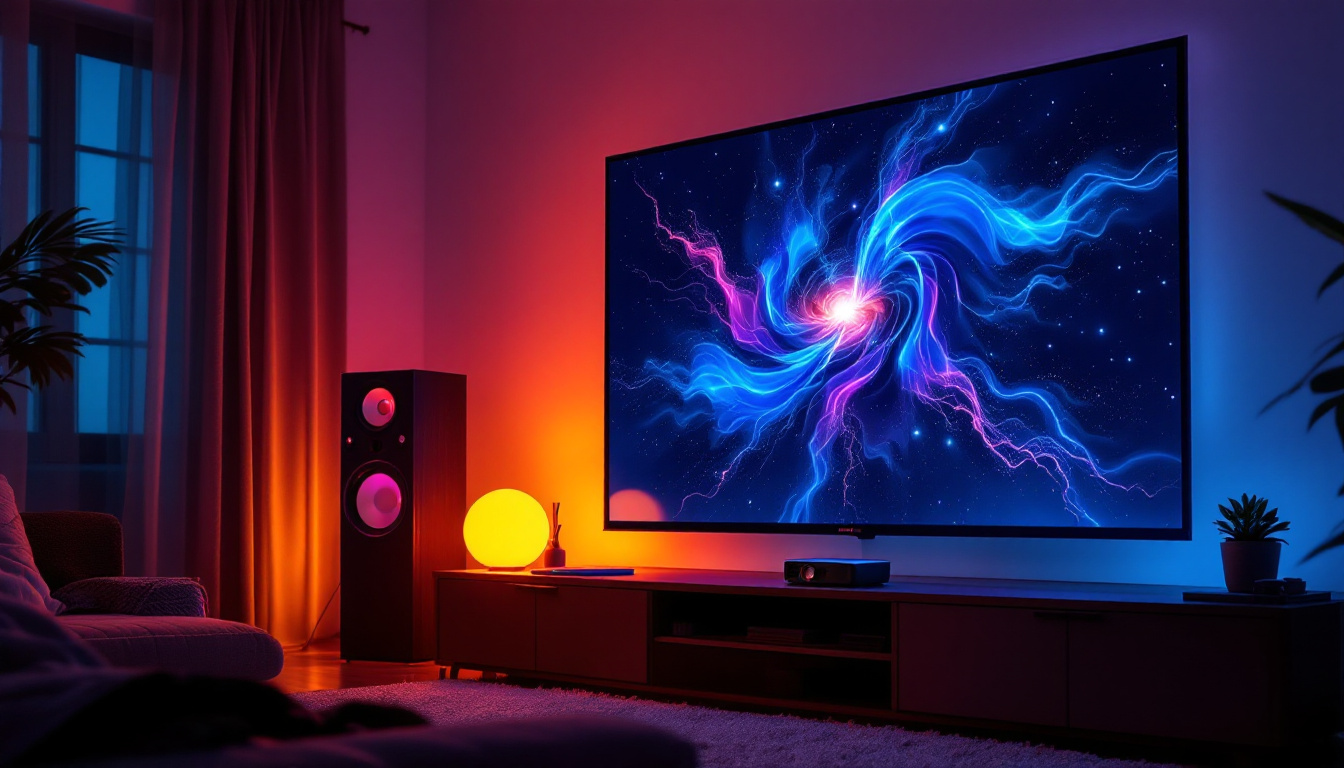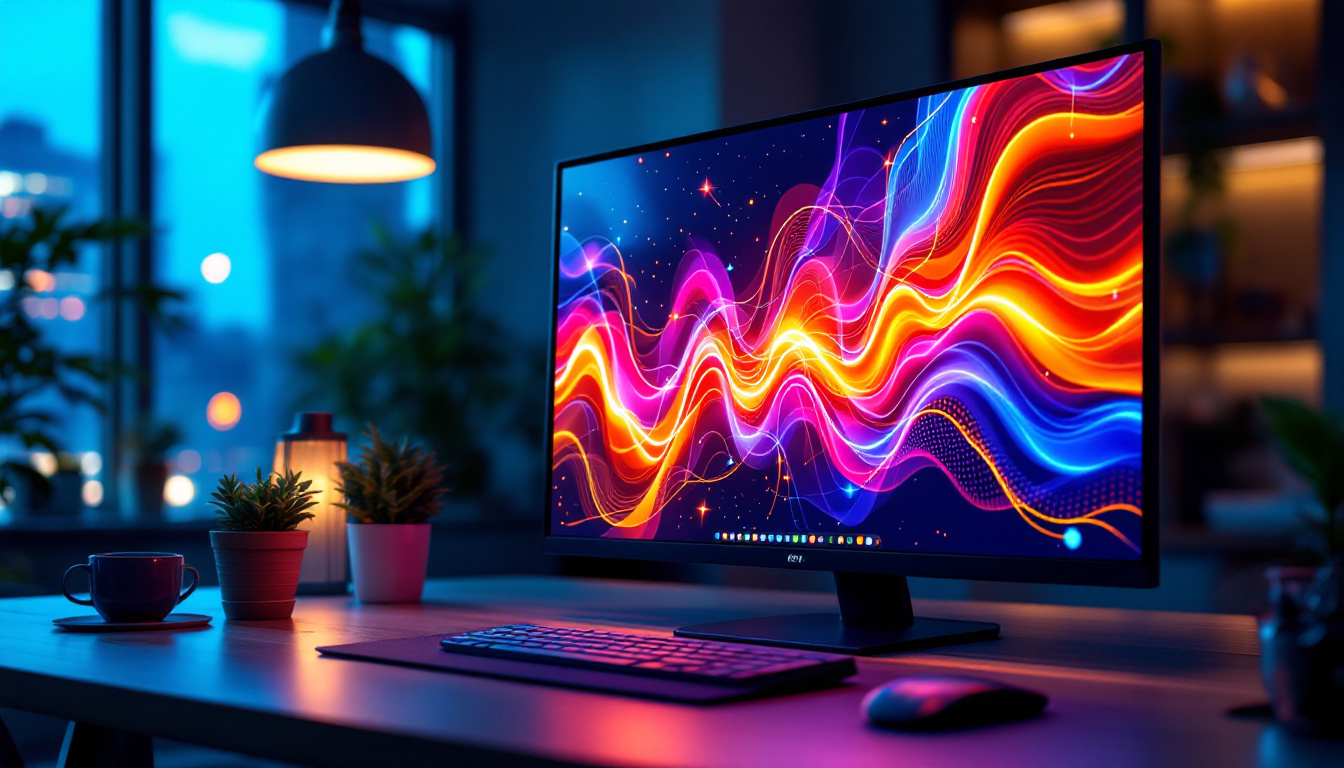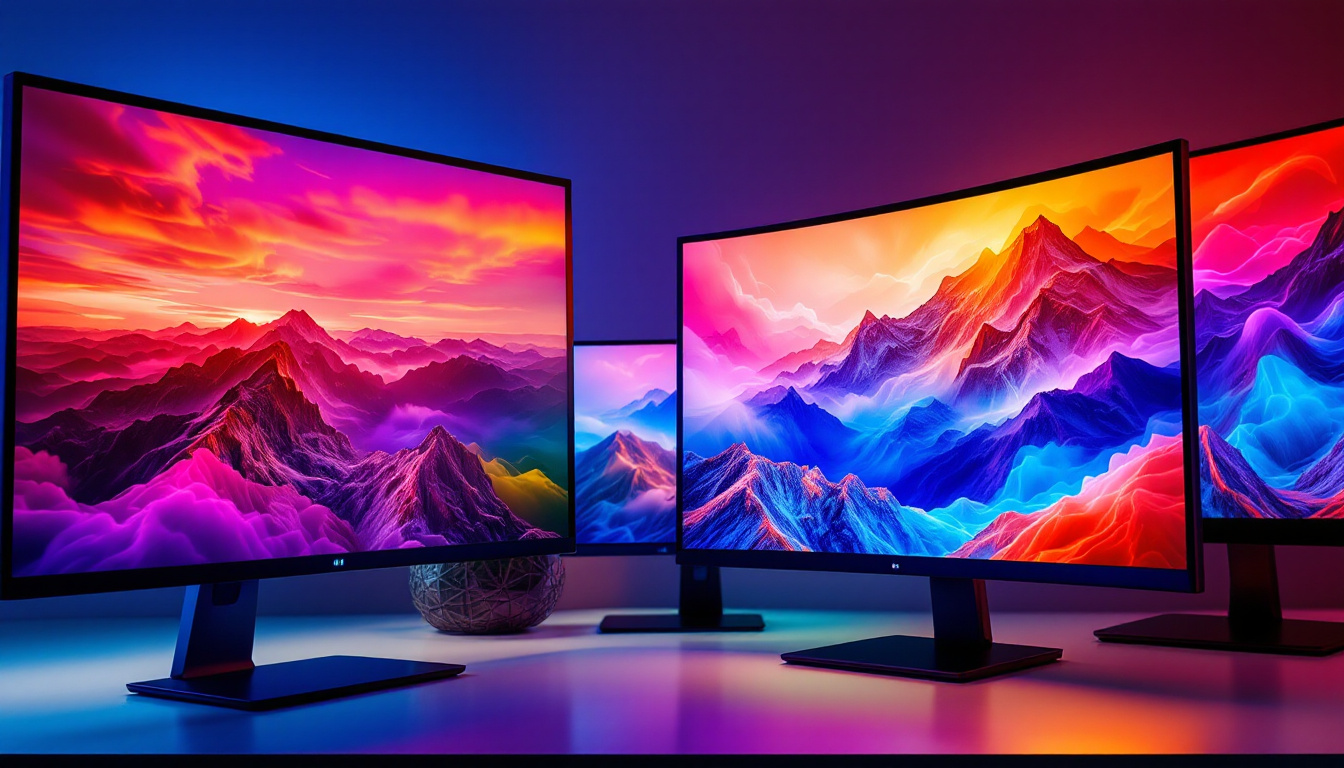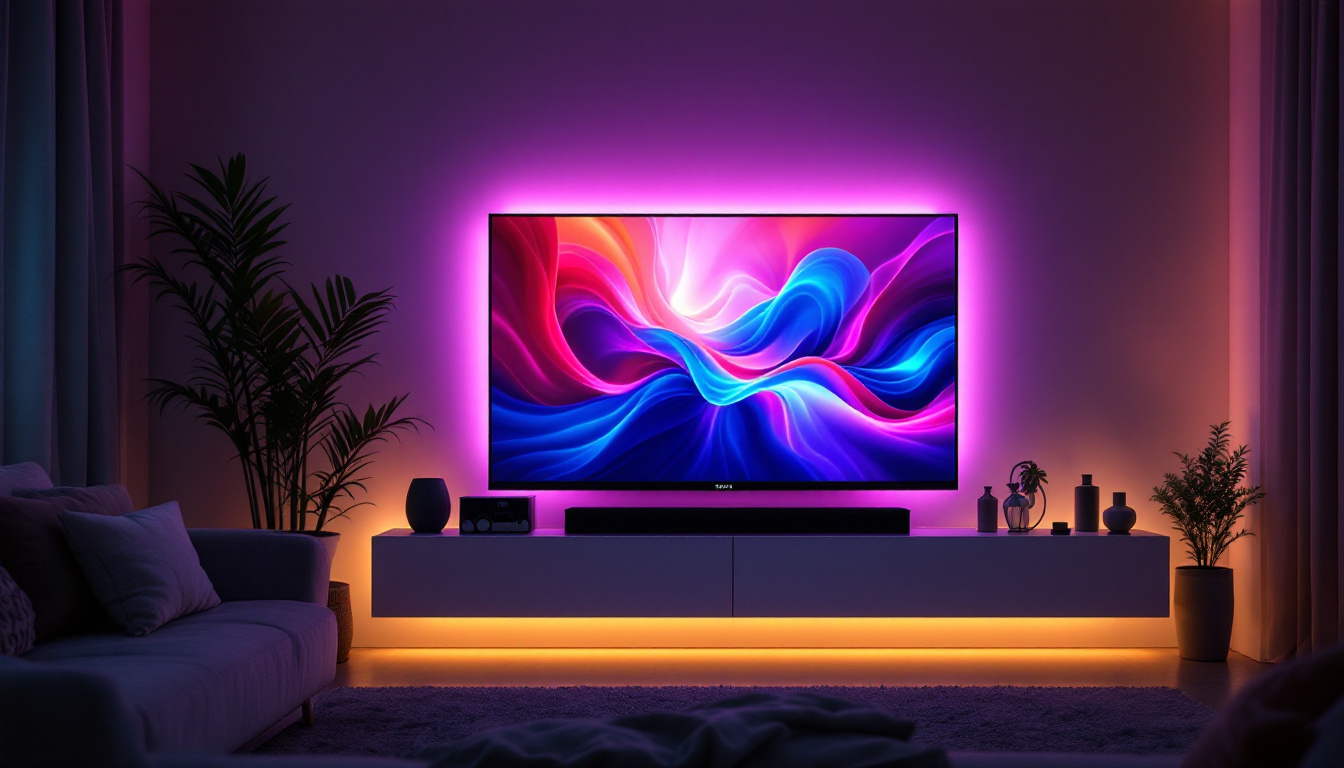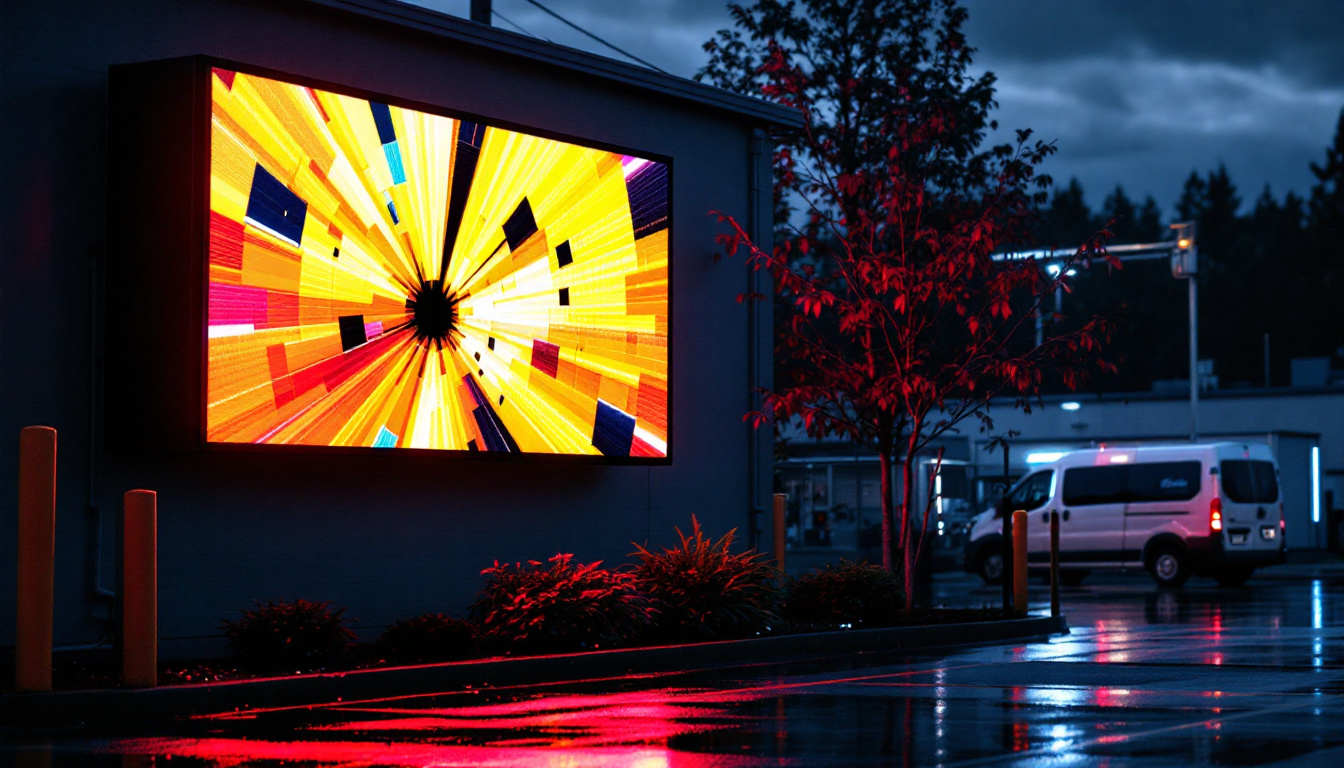In the ever-evolving world of technology, the television monitor market has seen significant advancements, particularly with the rise of LED displays. This article delves into the intricacies of LED technology, exploring its benefits, types, and what to consider when purchasing a TV monitor.
Understanding LED Technology
LED, or Light Emitting Diode, technology has revolutionized the way images are displayed on screens. Unlike traditional LCD monitors that use fluorescent backlighting, LED monitors utilize a series of tiny diodes to produce light, resulting in brighter images, better contrast, and improved energy efficiency.
This technology has made its way into various types of displays, including televisions, computer monitors, and digital signage. The vibrant colors and sharp images produced by LED displays have made them increasingly popular among consumers and professionals alike. Furthermore, the rapid advancements in LED technology have led to the development of OLED (Organic LED) displays, which offer even deeper blacks and more vivid colors by allowing individual pixels to emit their own light, thus eliminating the need for backlighting altogether.
How LED Displays Work
At the core of LED technology are the diodes that emit light when an electric current passes through them. In LED displays, these diodes can be arranged in different configurations, such as edge-lit or backlit, to enhance the viewing experience.
Edge-lit displays feature LEDs positioned along the edges of the screen, while backlit displays have a grid of LEDs behind the screen. The latter typically offers better color accuracy and contrast, making it a preferred choice for those seeking high-quality visuals. Additionally, advancements in dimming technologies, such as local dimming, allow for enhanced contrast ratios by selectively dimming or brightening sections of the screen, further improving the overall picture quality and viewing experience.
Benefits of LED Displays
LED displays come with a host of advantages that make them an attractive option for consumers. One of the most notable benefits is their energy efficiency. LED monitors consume significantly less power compared to their LCD counterparts, leading to reduced electricity bills and a smaller carbon footprint.
Additionally, LED displays are known for their longevity. With a lifespan of up to 100,000 hours, these monitors can outlast traditional displays, making them a worthwhile investment for both home and professional use. Beyond their durability, LED displays are also more environmentally friendly, as they do not contain hazardous materials like mercury, which is commonly found in older display technologies. This makes them a safer choice for both consumers and the planet, aligning with the growing trend towards sustainable technology solutions. Furthermore, the lightweight nature of LED screens allows for easier installation and versatility in various settings, from home theaters to corporate environments.
Types of LED Displays
When considering a TV monitor for sale, it’s essential to understand the different types of LED displays available. Each type has unique features and benefits that cater to various needs and preferences.
Standard LED Displays
Standard LED displays are the most common type found in homes and offices. They offer a good balance of performance and price, making them suitable for everyday viewing. These monitors provide vibrant colors and decent contrast ratios, making them ideal for watching movies, playing video games, or working on graphic design projects.
In addition to their affordability, standard LED displays often come with various screen sizes and resolutions, allowing consumers to choose a model that fits their specific space and usage requirements. Many models also include features like energy-saving modes and built-in speakers, enhancing their usability for casual viewing or presentations. Furthermore, advancements in LED technology have led to thinner bezels and sleeker designs, making them an attractive addition to any room.
OLED Displays
Organic Light Emitting Diode (OLED) displays represent a significant advancement in screen technology. Unlike traditional LED displays, OLED screens do not require a backlight, as each pixel emits its own light. This results in deeper blacks, more vibrant colors, and wider viewing angles.
While OLED displays tend to be more expensive, they are favored by professionals in the film and photography industries due to their superior color accuracy and contrast. For those willing to invest, an OLED monitor can provide an unparalleled viewing experience. Additionally, OLED technology is continuously evolving, with manufacturers working to improve longevity and reduce the risk of image retention. This makes OLED displays increasingly appealing not only for home entertainment but also for creative professionals who demand the highest visual fidelity.
QLED Displays
Quantum Dot LED (QLED) displays are another innovative option in the market. These monitors use quantum dots to enhance color and brightness, resulting in stunning visuals. QLED technology combines the benefits of LED displays with advanced color accuracy, making them an excellent choice for those who prioritize visual fidelity.
While QLED displays are often more expensive than standard LED monitors, they offer a compelling alternative to OLED technology, particularly for those who want vibrant colors without the risk of burn-in associated with OLED screens. Moreover, QLED displays excel in bright environments due to their high peak brightness levels, making them ideal for daytime viewing. With features like local dimming and HDR support, QLED monitors can deliver an impressive range of colors and contrast, ensuring that every scene is rendered with remarkable detail and depth. As the market continues to evolve, QLED technology is likely to become even more accessible, providing consumers with a high-quality viewing experience at a competitive price point.
Key Features to Consider
When shopping for a TV monitor, several key features should be taken into account to ensure the best purchase. Understanding these features can help consumers make informed decisions that meet their specific needs.
Resolution
Resolution is one of the most critical factors to consider when selecting a monitor. Higher resolutions provide sharper images and more detail. Common resolutions include Full HD (1920×1080), 4K (3840×2160), and even 8K (7680×4320) for those seeking the highest quality available.
For general use, a Full HD monitor may suffice. However, for gaming, graphic design, or professional video editing, a 4K or higher resolution monitor is recommended to fully appreciate the detail and clarity of modern content. Moreover, as streaming services and gaming platforms increasingly support higher resolutions, investing in a 4K or 8K monitor can future-proof your setup, ensuring compatibility with upcoming technologies and content.
Refresh Rate
The refresh rate, measured in hertz (Hz), indicates how many times per second the monitor refreshes the image on the screen. A higher refresh rate results in smoother motion and is particularly important for gaming and fast-paced video content.
Standard monitors typically have a refresh rate of 60Hz, but gaming monitors often feature rates of 120Hz, 144Hz, or even higher. For gamers, investing in a monitor with a higher refresh rate can significantly enhance the gaming experience. Additionally, some monitors come with adaptive sync technologies like NVIDIA G-Sync or AMD FreeSync, which help eliminate screen tearing and stuttering, providing an even smoother visual experience during intense gaming sessions.
Connectivity Options
Connectivity is another essential feature to consider. Modern monitors come equipped with various ports, including HDMI, DisplayPort, USB-C, and even legacy ports like VGA and DVI. Ensuring that the monitor has the necessary ports for your devices is crucial for seamless integration into your setup.
Additionally, features like built-in Bluetooth or Wi-Fi connectivity can enhance the user experience by allowing for wireless connections to other devices, such as speakers, smartphones, or streaming devices. Furthermore, many monitors now offer USB hubs, enabling users to connect multiple peripherals directly to the monitor, reducing cable clutter and simplifying the overall setup. This can be particularly beneficial for those who frequently switch between devices or require easy access to USB ports for charging and data transfer.
Buying Tips for LED TV Monitors
Purchasing a TV monitor can be overwhelming, given the multitude of options available. However, following a few tips can simplify the process and help consumers find the perfect display for their needs.
Set a Budget
Before diving into the market, it’s essential to establish a budget. LED monitors come in a wide price range, and having a clear budget can help narrow down options and prevent overspending. Keep in mind that while higher-priced models often offer better features, there are also excellent mid-range options that deliver great performance.
Read Reviews and Comparisons
Researching reviews and comparisons can provide valuable insights into the performance and reliability of different models. Websites that specialize in technology reviews often provide in-depth analyses, highlighting the strengths and weaknesses of various monitors.
Additionally, user reviews can offer real-world experiences that may not be captured in professional reviews, helping potential buyers make informed decisions based on actual usage.
Consider Warranty and Support
When purchasing a TV monitor, it’s wise to consider the warranty and customer support offered by the manufacturer. A solid warranty can provide peace of mind, ensuring that any potential issues can be addressed without incurring additional costs.
Furthermore, responsive customer support can be invaluable if technical issues arise. Checking the manufacturer’s reputation for customer service can help ensure a positive ownership experience.
Conclusion
As the market for TV monitors continues to grow, understanding the intricacies of LED display technology is essential for making informed purchasing decisions. With various types of LED displays available, each offering unique benefits, consumers can choose a monitor that best suits their needs.
By considering key features such as resolution, refresh rate, and connectivity options, along with setting a budget and researching models, buyers can navigate the complexities of the market with confidence. Ultimately, investing in a quality LED monitor can enhance the viewing experience, whether for entertainment, work, or creative endeavors.
Discover LumenMatrix’s Innovative LED Displays
Ready to elevate your visual experience with the latest in LED display technology? Look no further than LumenMatrix, a pioneer in crafting dynamic and immersive LED display modules. Whether you’re in need of an Indoor LED Wall Display for a corporate setting, an Outdoor LED Wall Display for high-impact advertising, or any of our specialized solutions like Vehicle LED Displays and LED Sports Displays, LumenMatrix has you covered. Embrace the future of visual communication and check out LumenMatrix LED Display Solutions today to bring your brand’s message to life with unparalleled clarity and vibrancy.

